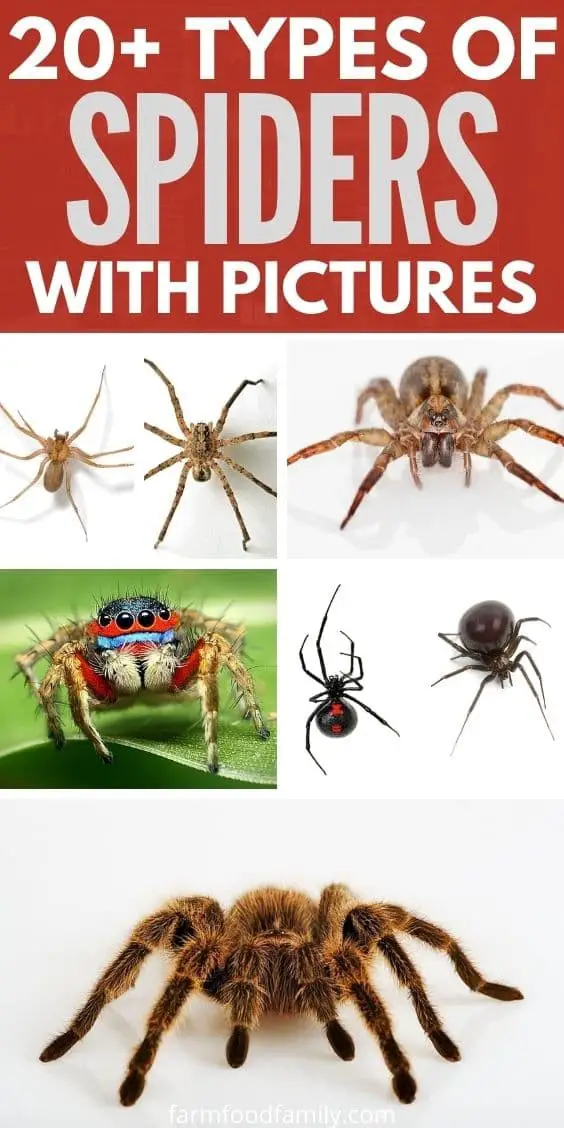26 Best Trailing And Hanging Succulents For Your Garden (With Pictures)
If you’re looking to add a splash of color and visual interest to your garden, consider incorporating some of the many varieties of trailing and hanging succulents that are perfect for this purpose. These plants offer a unique opportunity to add depth and texture to your outdoor space, and with over 26 different options to choose from, you’re sure to find one that fits your personal style and gardening needs.
From Burro’s Tail to Wax Plant, each of these succulents has its own unique characteristics, colors, and growing habits. In this post, we’ll delve into the world of trailing succulents, exploring everything from their facts and benefits to the best ways to care for them.
Whether you’re a seasoned gardener or just starting out, there’s something here for everyone. So grab a cup of coffee, get comfortable, and let’s dive in!
What are trailing succulents?
Trailing succulents, characterized by their long, slender stems and leaves, are a popular choice for gardeners and indoor plant enthusiasts alike. They bring a touch of natural beauty to any space, making them an excellent decorative option. One of the biggest advantages of trailing succulents is their low-maintenance requirements. If you’re short on time or not particularly green-thumbed, these plants are perfect for you. With proper care, they can thrive in even the busiest of households.
Before bringing a trailing succulent into your home or garden, there are a few essential considerations to keep in mind. First and foremost, these plants require plenty of sunlight to survive. Ensure that the chosen location receives at least six hours of direct sunlight each day for optimal growth. Another key factor in caring for trailing succulents is water management. Unlike some other types of plants, succulents don’t require a lot of hydration.
In fact, overwatering can be detrimental to their health. To keep your plants happy and healthy, allow the soil to dry out completely between watering sessions.
Facts about trailing succulents.
Trailing succulents are characterized by their long, slender stems that can be trained to cascade down shelves and windowsills or thrive in hanging baskets. With numerous varieties to choose from, including Sedum, Echeveria, and Sempervivum, these plants offer a range of textures and colors to enhance any space. One of the significant advantages of trailing succulents is their low-maintenance nature.
They require minimal watering, making them an ideal choice for busy individuals or those who tend to forget to water their plants from time to time. In fact, trailing succulents are known for their remarkable tolerance of neglect, and can survive with infrequent watering for short periods. However, prolonged neglect may result in some wilting, serving as a gentle reminder to attend to these lovely plants.
Types of Trailing and Hanging Succulents
Burro’s Tail (Sedum morganianum).
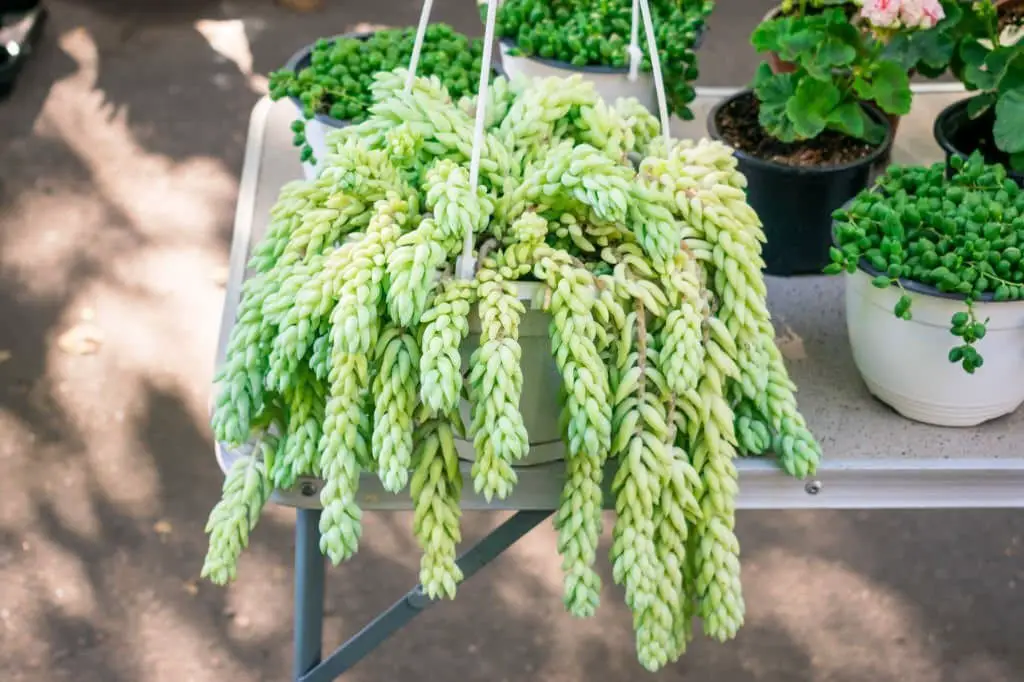
Native to Mexico, Burro’s Tail is a succulent plant renowned for its distinctive, four-foot-long stems that resemble tails. Its fleshy, blue-green leaves are another notable feature of this unique plant. Small white flowers also adorn the plant, adding to its charm. As a low-maintenance option for gardens and indoor spaces alike, Burro’s Tail has gained popularity among plant enthusiasts. Its ability to thrive with minimal watering only adds to its appeal.
Calico Kitten (Crassula Pellucida).
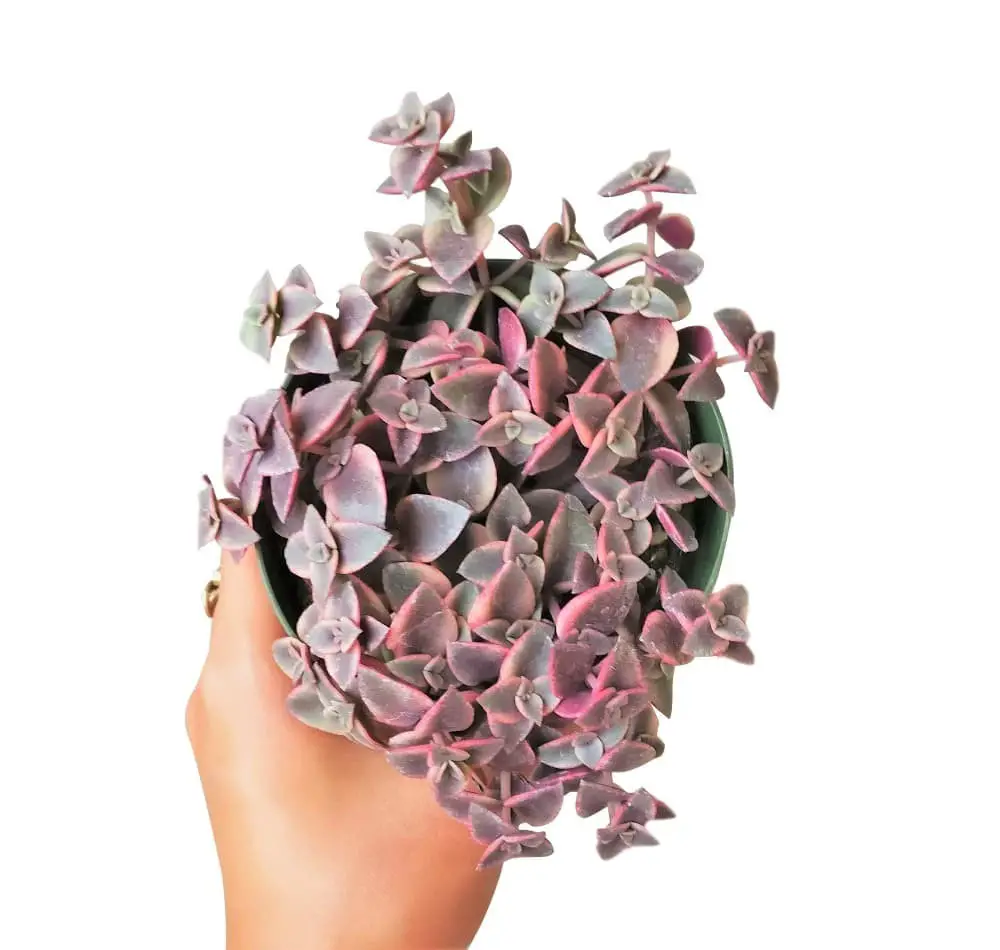
In the world of low-maintenance houseplants, Calico Kitten is a standout. Native to South Africa, this small, perennial succulent boasts fleshy, green leaves with distinctive white spots and dainty white flowers featuring pink or red streaks. Its popularity stems from its ability to thrive in environments where other plants might struggle. Bright, indirect light is ideal, but it can also tolerate some direct sunlight.
Moreover, Calico Kitten is incredibly drought-tolerant, requiring infrequent watering – simply allow the soil to dry out completely before rehydrating. This unique feature makes it an excellent choice for busy homeowners or those new to plant parenthood. The variegated leaves add a touch of visual interest, setting it apart from more ordinary succulents.
Christmas Cactus (Schlumbergera Bridgesii).
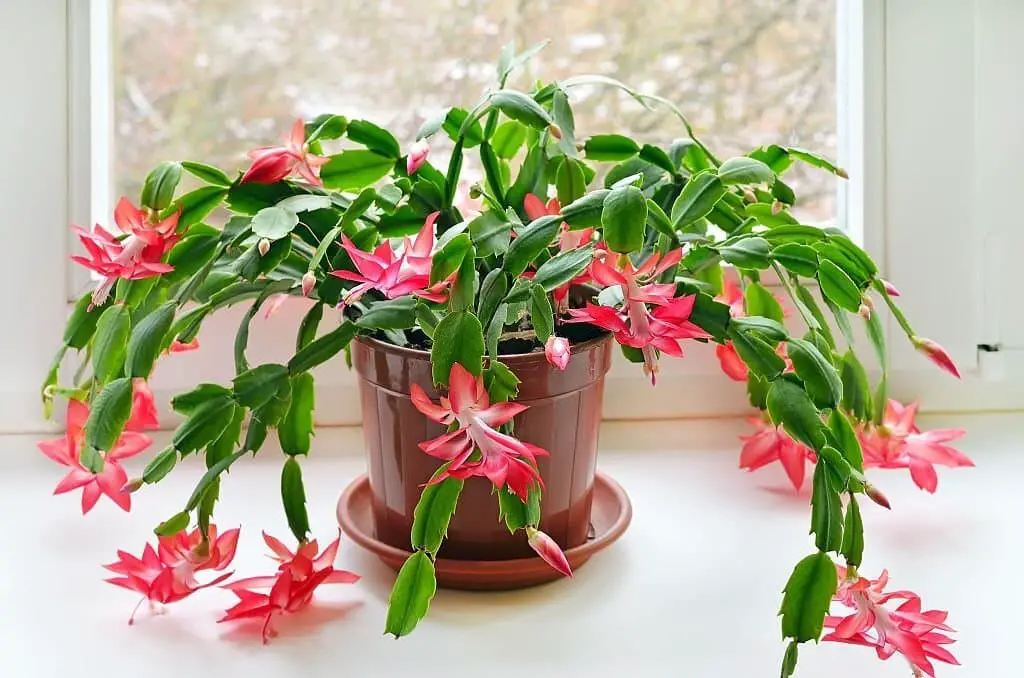
Discover the joys of decorating with a Christmas cactus! Native to Brazil, this unique plant has gained popularity as a festive holiday decoration due to its blooming cycle that coincides with Christmas time. While it’s often referred to as a ‘cactus’, Christmas cacti are actually part of the Schlumbergera family. Their low-maintenance nature and versatility make them an ideal addition to any home, serving as excellent houseplants.
Interestingly, these plants can be easily propagated by taking stem cuttings and rooting them in soil, allowing you to share the holiday cheer with friends and loved ones.
Climbing Aloes (Aloiampelos).
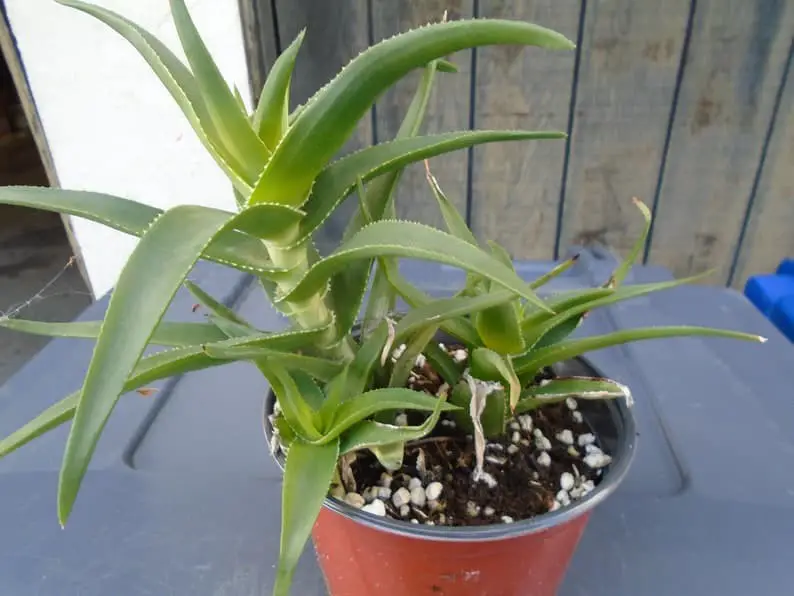
Discover the unique charm of Climbing Aloes on Etsy. These fascinating plants are part of the Asphodelaceae family, native to southern Africa, where they thrive as evergreen succulents. Characterized by thick, fleshy leaves and stems, they produce vibrant flowers on racemes or panicles, often in shades of red, orange, or yellow.
Among the four species that make up this genus, Aloiampelos ciliaris stands out for its ability to reach up to 15 meters tall as a scrambling climber with bright orange blooms. Its popularity has earned it the common name ‘trailing aloe’ or ‘climbing aloe’. Meanwhile, Aloiampelos decumbens is a compact, small-scale plant with yellow flowers, native to the Eastern Cape Province of South Africa.
Aloiampelos comptonii, endemic to KwaZulu-Natal, showcases its own unique charm as a scrambling climber sporting orange-red blooms and reaching up to 12 meters in height.
Dancing Bones (Hatiora Salicornioides).
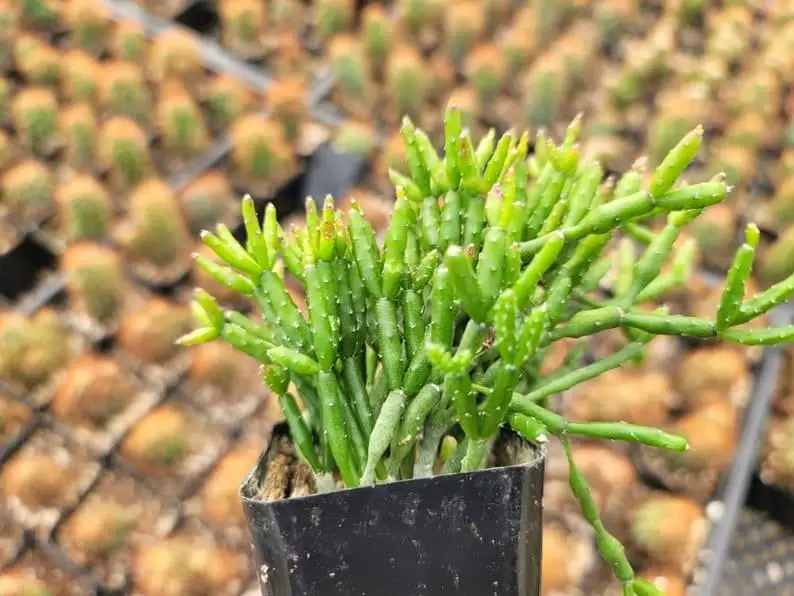
Etsy shoppers rejoice! The charming Dancing Bones succulent is just waiting to trail over the edge of your pot or hang elegantly from a basket. Its slender stems, adorned with tiny leaves in an alternating pattern, exude a delicate charm.
The fleshy leaves themselves boast a soft light green hue and sport a fetching red tip, while the white blooms appear in clusters at the stem’s end, adding a pop of color to your space.
Hailing from Brazil, this succulent is part of the cactus family and earns its whimsical name from the way its stems seem to dance in the breeze. And best of all, Dancing Bones is a low-fuss plant that thrives with minimal upkeep – it’s happy with less water and can even survive some neglect.
Elephant Bush (Portulacaria Afra).
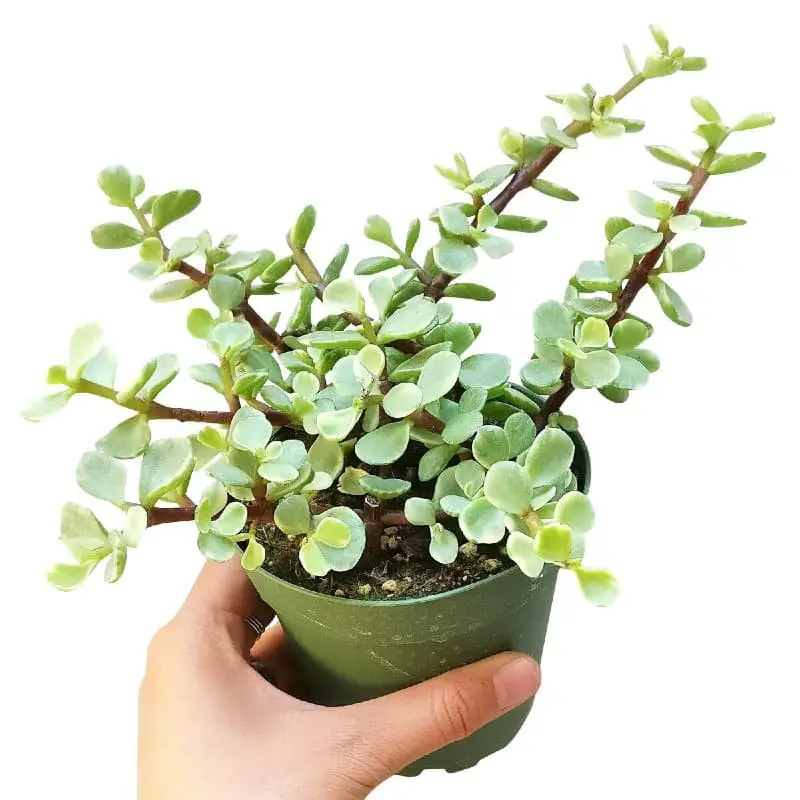
With its striking, trailing foliage, the elephant bush is a stunning addition to any indoor or outdoor space. Native to South Africa, this versatile succulent boasts long, green leaves that often take on hints of red or purple hues. Not only does it grow quickly, reaching lengths of up to six feet, but it’s also remarkably resilient, able to thrive in conditions ranging from full sun to partial shade.
What’s more, the elephant bush is an ideal choice for those just starting out with succulent cultivation, offering a low-maintenance and adaptable option that’s sure to delight.
Ice Plant (Dorotheanthus Bellidiformis).
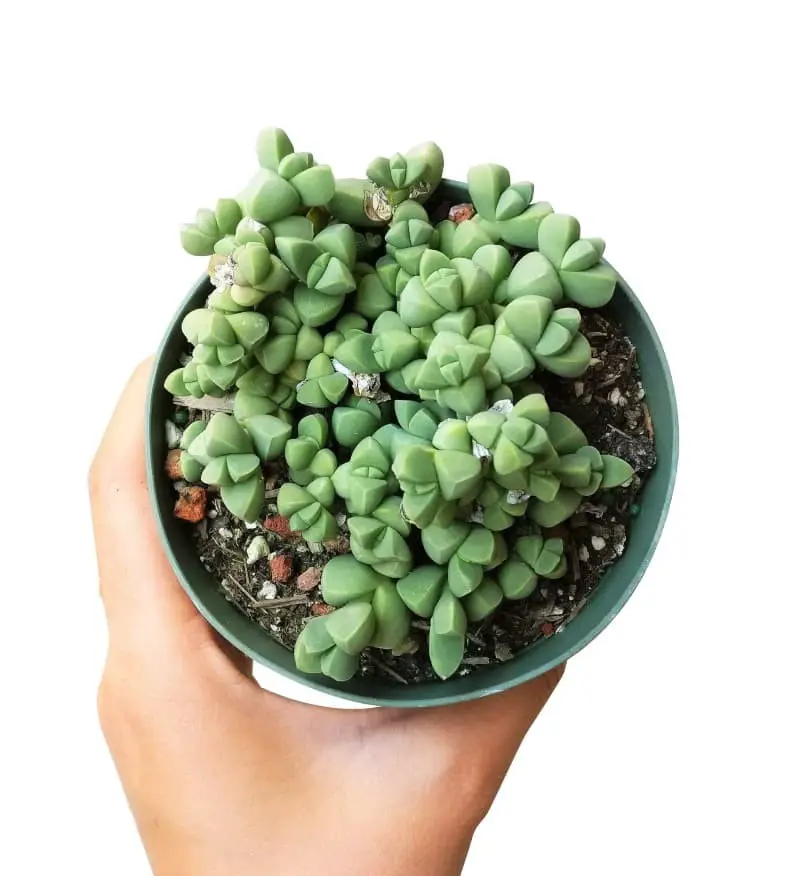
Purchasing options are available below. The ice plant, a sun-loving perennial, is frequently used as a low-growing groundcover. Its striking feature is its fleshy, blue-green foliage. In addition to its attractive leaves, the ice plant produces an abundance of flowers in shades of pink, white, and purple throughout the spring and fall seasons. One of the key advantages of this plant is its ability to thrive in poor soil conditions and withstand drought.
This makes it an excellent choice for areas that receive full sun and are prone to dryness.
Kenya Hyacinth (Sansevieria Parva).
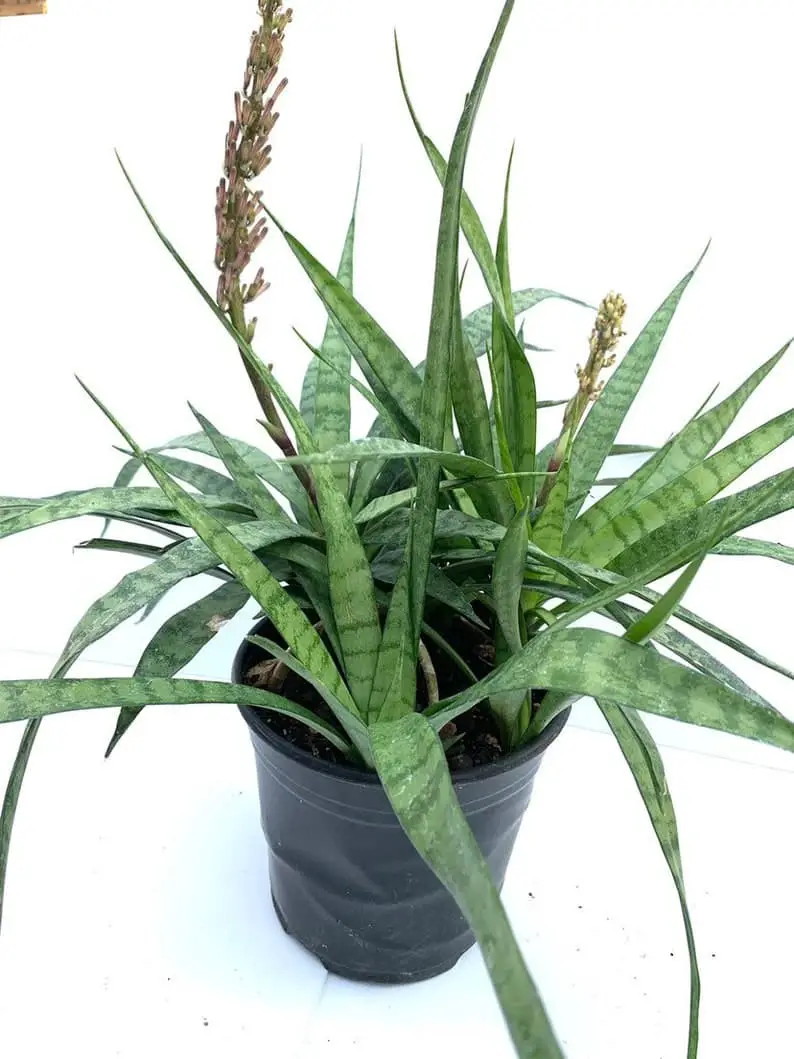
Kenya Hyacinth, a succulent native to the country, can be found in many home decor shops, including Etsy. This plant, which belongs to the Asparagaceae family and is closely related to the snake plant (Sansevieria trifasciata), boasts small, evergreen leaves that grow up to 12 inches tall and are arranged in a rosette pattern with green and yellow hues. When it blooms in the summer, Kenya Hyacinth produces white flowers with striking purple stripes.
Its adaptability to thrive in both full sun and partial shade makes it an ideal choice for indoor spaces or gardens, where it can be used as a low-maintenance groundcover.
Lantern Flower (Ceropegia Haygarthii).
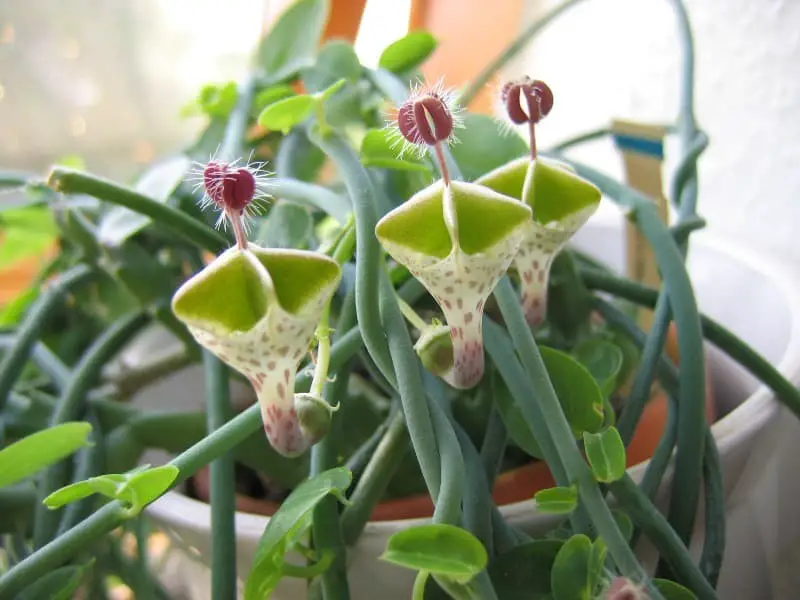
Lantern flowers, scientifically known as Ceropegia Haygarthii, are a type of trailing succulent that can instantly add a splash of greenery to any space. Native to South Africa, this versatile plant boasts a range of colors including vibrant hues of green, pink, and purple. What’s more, its striking blooms take on a miniature lantern-like shape, earning it the nickname ‘Lantern Flower.’ And the best part?
This low-maintenance succulent is incredibly easy to care for, requiring hardly any upkeep at all.
Little Missy (Sedum ‘Little Missy’)
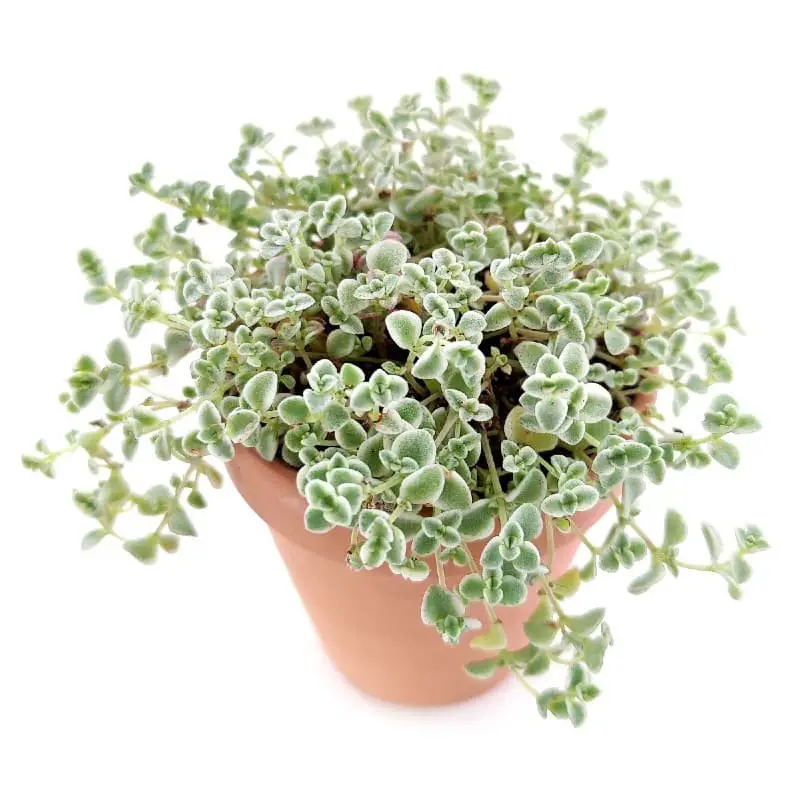
For those seeking a low-maintenance and adaptable addition to their home or office decor, Little Missy succulent is an excellent choice. This versatile trailing plant not only brings a splash of greenery but also thrives in conditions that would be challenging for many other plants. Its ability to tolerate neglect and poor lighting makes it perfect for busy individuals or those new to the world of plant parenthood.
Furthermore, Little Missy’s vibrant green leaves add a pop of color to any space, providing an instant visual boost.
Mezoo Trailing Red (Dorotheanthus Bellidiformis).
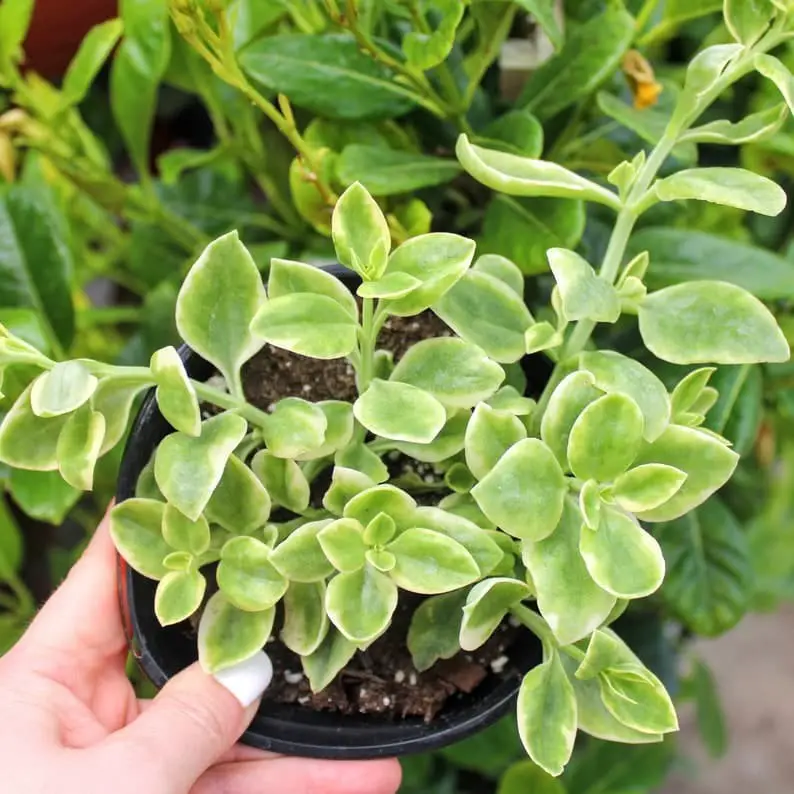
Experience the beauty of nature with Etsy’s unique offerings! The Mezoo Trailing Red, a stunning perennial succulent native to South Africa, boasts vibrant red flowers and thrives in well-drained soil. Its low-maintenance requirements make it an ideal choice for busy plant enthusiasts, as it can withstand drought conditions. With its ability to propagate through stem cuttings, this lovely addition to any succulent collection is just a click away.
Monkey’s Tail (Hildewintera Colademononis).
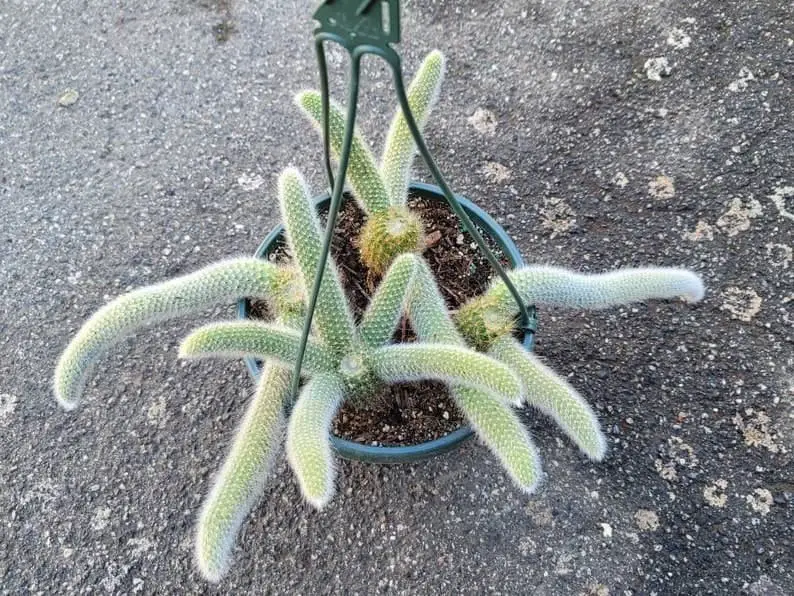
Discover the unique charm of Monkey’s Tail on Etsy! Native to Bolivia, this cactus boasts an impressive height of up to 15 feet, with its distinctive tail-like shape inspiring its name. The plant’s green or blue flowers add a pop of color, making it a striking addition to any indoor space. As a slow-growing species, Monkey’s Tail requires patience, but its long lifespan ensures it will remain a beloved companion for many years to come.
October Daphne (Hylotelephium Sieboldii).
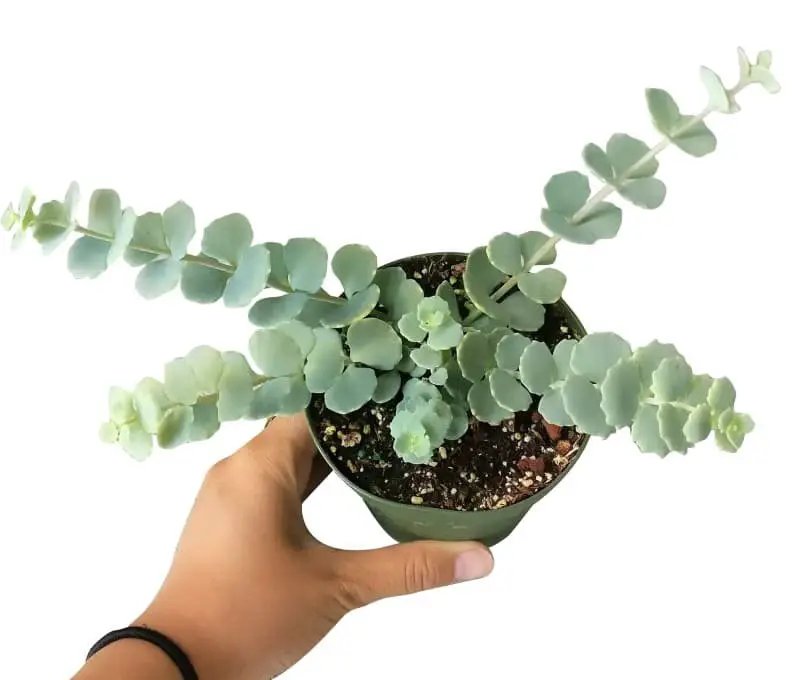
October Daphne, also known as Sedum Sieboldii and Japanese Stonecrop, is a stunning succulent native to Japan that’s named after the Greek goddess of hunting. This hardy plant can grow up to 12 inches tall, boasting beautiful blue-green leaves that transform into vibrant red hues during fall. Its pink blooms appear in October, making it an excellent addition to gardens or containers.
Despite its elegant appearance, October Daphne is remarkably low-maintenance, thriving in dry conditions and requiring minimal watering. Propagation is also relatively straightforward, as stem cuttings can be taken from the plant during spring or summer. Simply snip a four-inch cutting with at least two leaves, pot it in well-drained soil, and voila! New October Daphne plants will begin to grow.
Alternatively, seeds can be sown on the surface of well-drained soil during the same seasons, allowing for easy propagation.
Peanut Cactus (Echinopsis Chamaecereus).
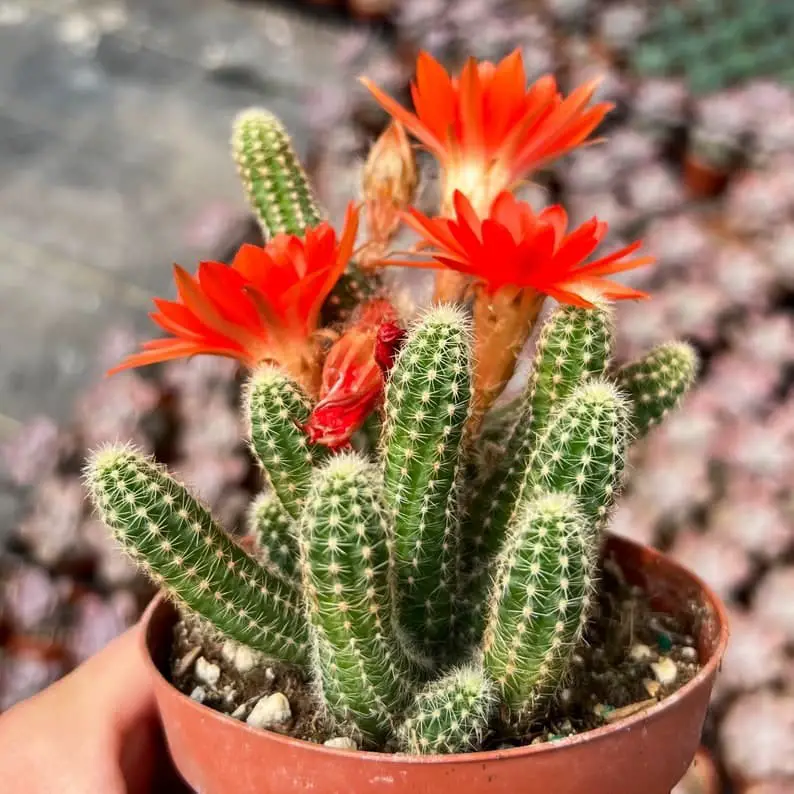
On Etsy, you can find the enchanting Peanut cactus, native to Bolivia, which boasts a unique appearance that has earned it its name. This small, rounded cactus grows up to 30 cm (12 in) tall and is characterized by numerous small, sharp spines. The delicate white or pink flowers bloom in spring, adding a touch of elegance to the landscape. The Peanut cactus’s peanut-like shape has also led to it being referred to as the ‘golden ball cactus’ or simply ‘ball cactus’.
Its popularity stems from its ease of cultivation and ability to thrive in various environments. With low watering needs and tolerance for minor neglect, this plant is an ideal choice for beginner gardeners. Moreover, the Peanut cactus has a natural resistance to pests and diseases, making it a low-maintenance yet rewarding addition to any home or garden.
Porcelain Flower (Hoya Pachyclada).
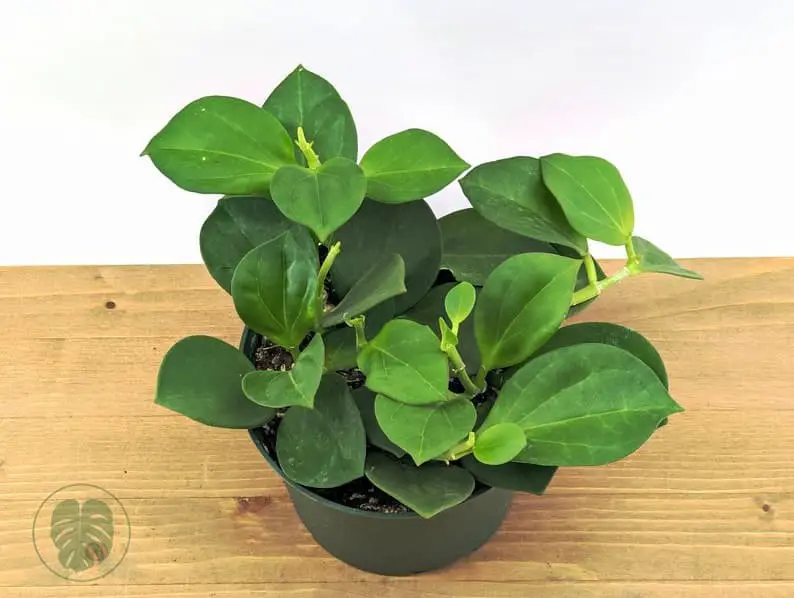
Indulge your shopping cravings on Etsy and discover the enchanting world of flora! The porcelain flower, scientifically known as Hoya pachyclada, is a captivating species native to Thailand. This twining vine grows up to 20 meters (66 feet) tall, boasting leathery, lanceolate leaves that unfurl alongside delicate white blooms featuring striking purple centers.
As the name suggests, the specific epithet pachyclada translates to ‘thickened flower’, highlighting the unique characteristics of this beautiful plant.
Rat Tail Cactus (Disocactus Flagelliformis)
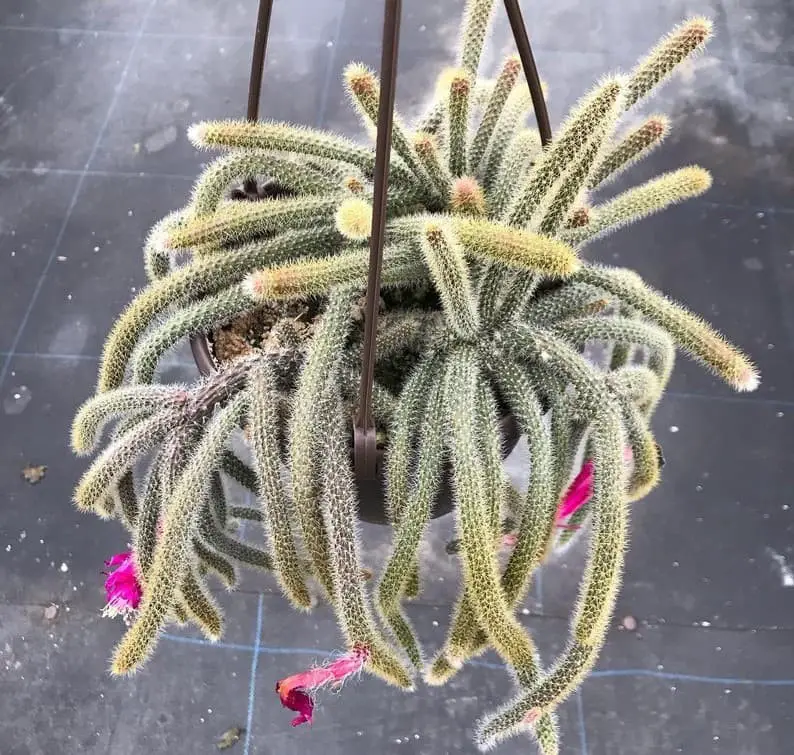
Native to Mexico, the Rat Tail Cactus is a vining species known for its striking, rat-tail like stems. This fast-growing cactus can rapidly grow up to 15 feet in length if left unpruned, making it a popular choice for those seeking a unique and dramatic display. In addition to its impressive size, Rat Tail Cactus also produces small white flowers that bloom during the summer months, adding an extra layer of beauty to this already striking plant.
Ruby Necklace (Othonna Capensis).
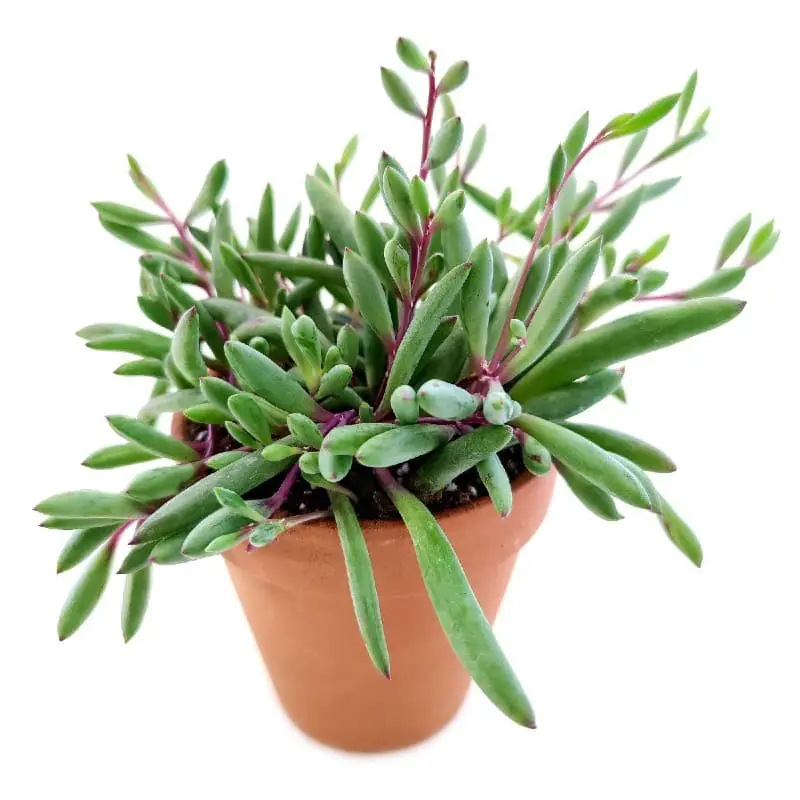
Ruby Necklace, an annual succulent, boasts a sprawling habit that reaches 18 inches (45 cm) wide and 12 inches (30 cm) tall. Its leaves are rounded or oval-shaped, fleshy, and display a range of green to purple hues. Small white flowers adorn the inflorescences that emerge from the leaf axils, adding to the plant’s unique charm. Native to South Africa, Ruby Necklace has gained popularity as an ornamental plant due to its low-maintenance requirements.
To thrive, it prefers full sun to partial shade and well-drained soil. Watering should be done sparingly, allowing the soil to dry out between intervals to ensure the succulent’s health.
String of Bananas (Senecio Radicans).
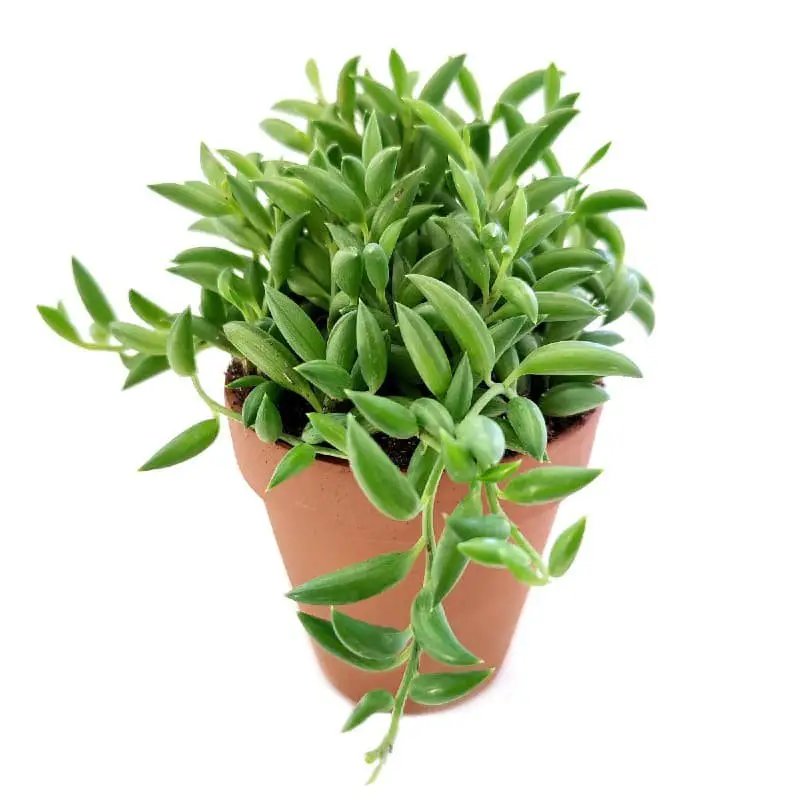
String of Bananas, a popular houseplant among beginners, boasts unique features that make it an ideal choice for those new to indoor gardening. Its distinct characteristic lies in its long, flowing stems adorned with small, banana-like leaves that cascade down. Originating from South Africa, this plant thrives in warm and humid environments.
One of the most impressive aspects of String of Bananas is its adaptability to varying light conditions.
It can comfortably grow under a wide range of lighting scenarios, from bright sunlight to low-light conditions, making it an excellent option for rooms with limited natural light. Additionally, this plant is surprisingly drought-tolerant and can survive extended periods without water.
While String of Bananas excels in many areas, there is one crucial aspect to consider: cold temperatures.
This plant doesn’t fare well in chilly environments, so be sure to keep it away from drafty windows or air conditioning vents.
String of Buttons (Crassula Perforata).
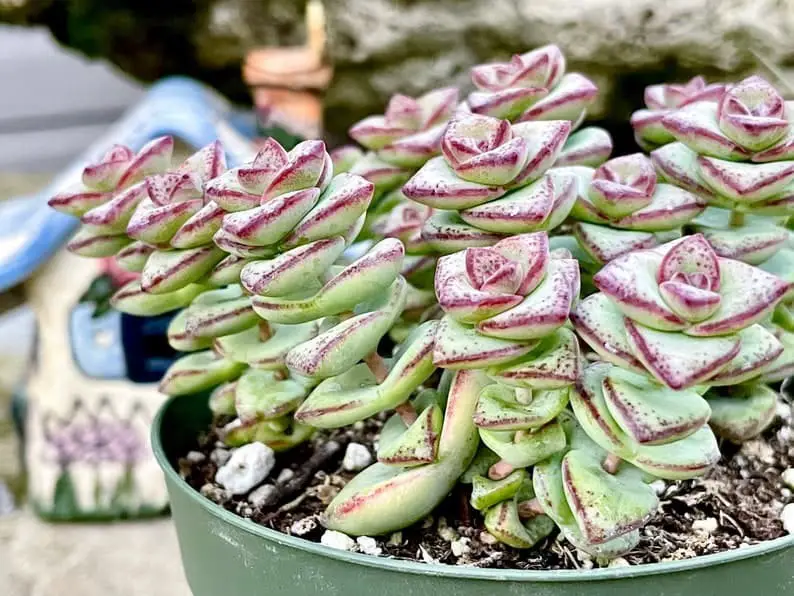
Discover the unique charm of String of Buttons, a succulent native to South Africa. Characterized by its round and fleshy leaves, slender stems, and creeping growth habit, this low-maintenance plant is easily recognizable due to its leaf arrangement pattern, which resembles buttons on a string. As a drought-tolerant species, it thrives in a variety of climates, making it an ideal choice for those new to plant parenthood or seeking a stress-free addition to their indoor space.
String of Hearts (Ceropegia Woodii).
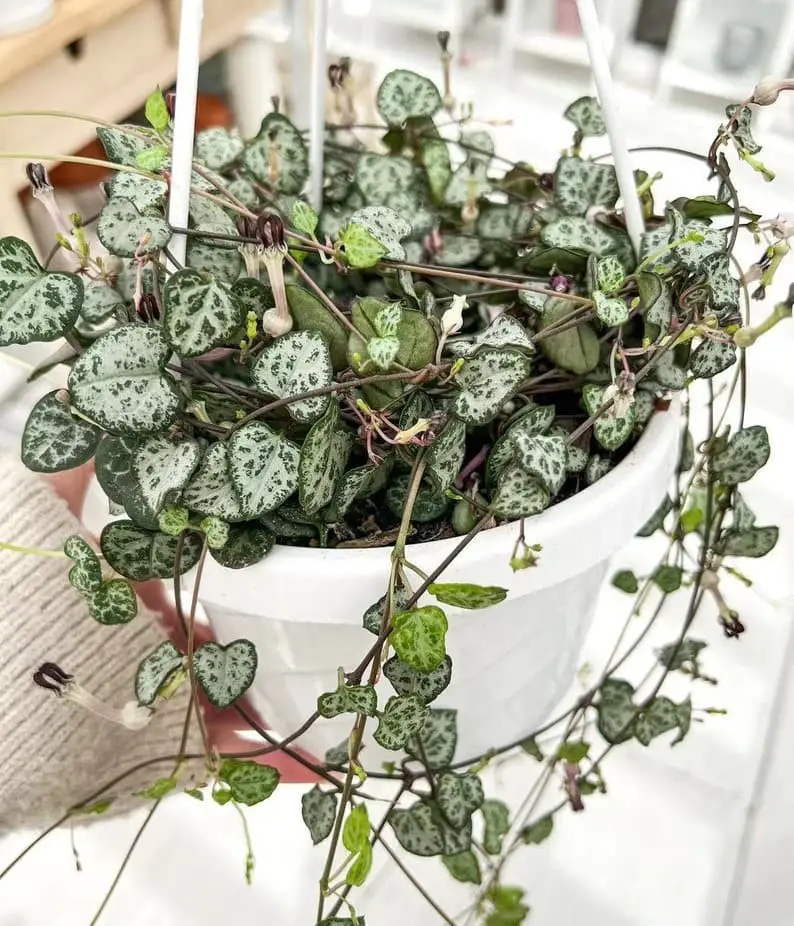
Indulge your love for indoor greenery by shopping on Etsy and bringing home a stunning String of Hearts leaf succulent. This charming, heart-shaped beauty is remarkably low-maintenance, thriving in bright indirect light whether it’s nestled in a pot or allowed to cascade from a hanging basket. With its origins in South Africa and Madagascar, this member of the milkweed family is sure to delight.
As it grows up to three feet long, you’ll be treated to a delightful display of small white flowers, adding an extra touch of elegance to any room.
String of Nickels (Dischidia Nummularia).
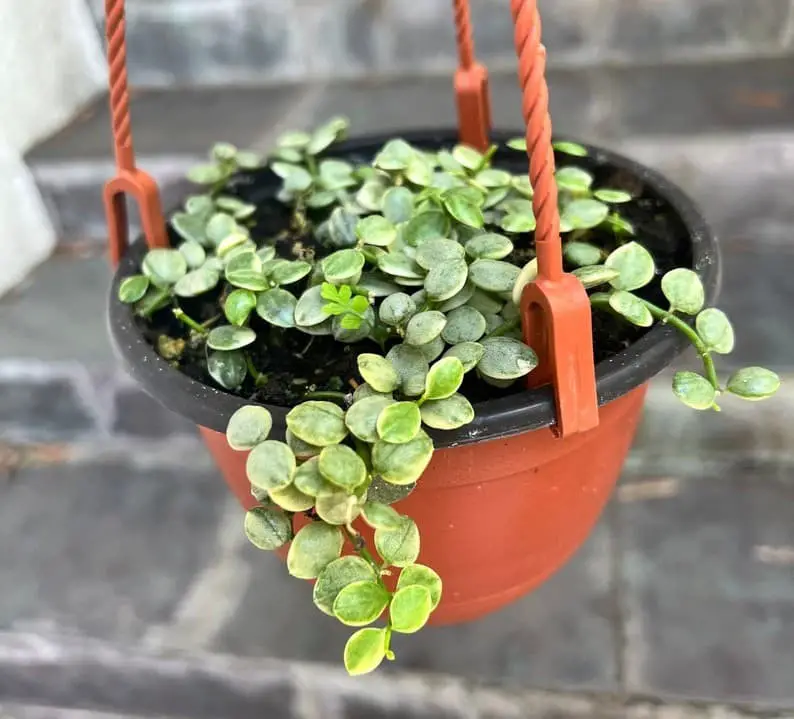
Etsy shoppers, rejoice! String of Nickels, a stunning succulent vine native to tropical Asia, is now available for purchase. Its unique leaves resemble coins, earning it its common name.
This fast-growing beauty can reach lengths of up to 20 feet, producing white or green flowers that bloom in the summer. With minimal upkeep required, String of Nickels thrives in warm temperatures and bright, indirect sunlight.
To keep your plant happy and healthy, water it only when the soil is dry to the touch, and fertilize once a month during its growing season.
String of Pearls (Curio Herreanus).
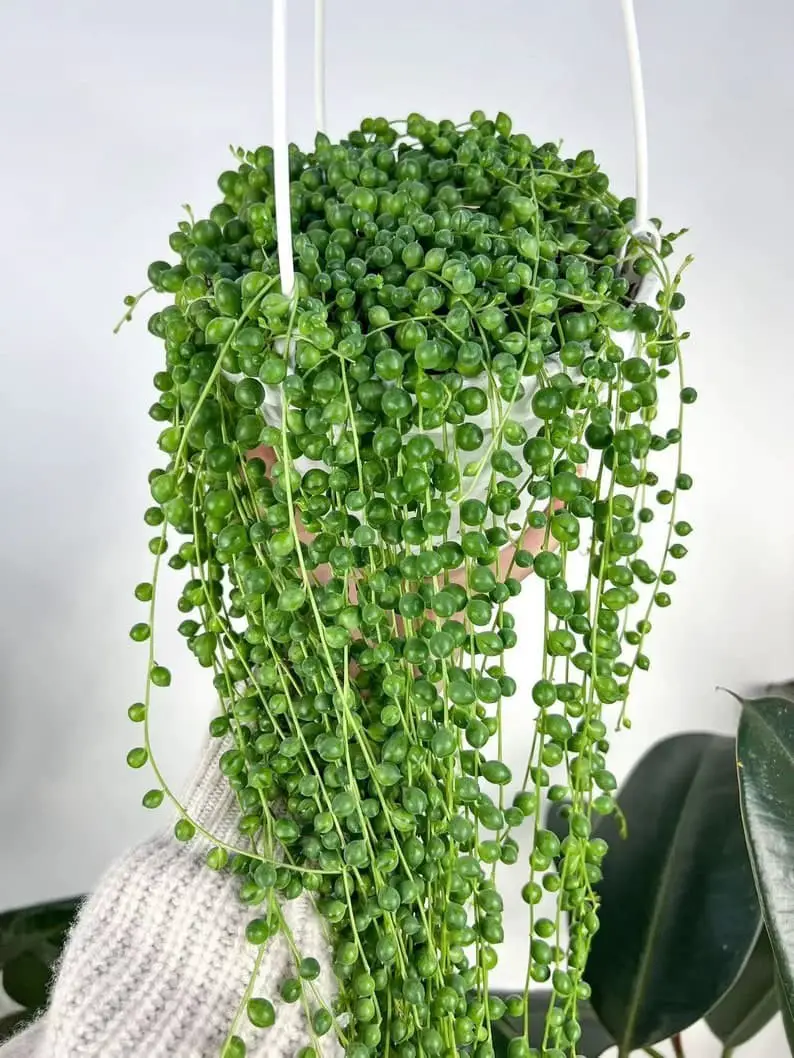
Discover the charm of String of Pearls, a succulent native to Madagascar and part of the Curio genus, boasting around 60 species. Its distinctive feature lies in its long, slender leaves that resemble beads on a string, making it an ideal choice for adding visual flair to your living or working space.
The Hindu Rope (Hoya Compacta).
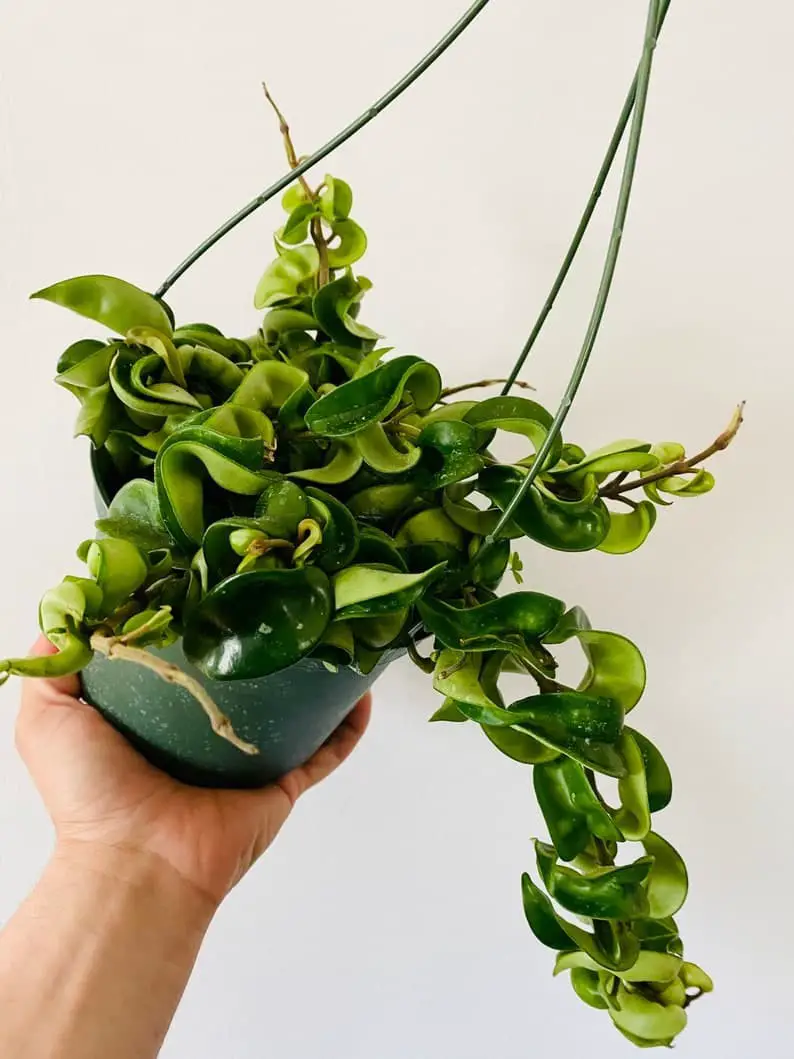
Indulge in the uniqueness of the Hindu Rope, a captivating houseplant available on Etsy. Native to southeastern Asia, this intriguing specimen boasts long, slender leaves with mesmerizing variegation, showcasing a harmonious blend of green, yellow, and white hues.
Characterized by its adaptability, the Hindu Rope thrives in environments with low light conditions and high humidity levels, making it an excellent choice for those seeking a low-maintenance yet visually striking addition to their indoor space.
Trailing Jade (Senecio Jacobsenii).
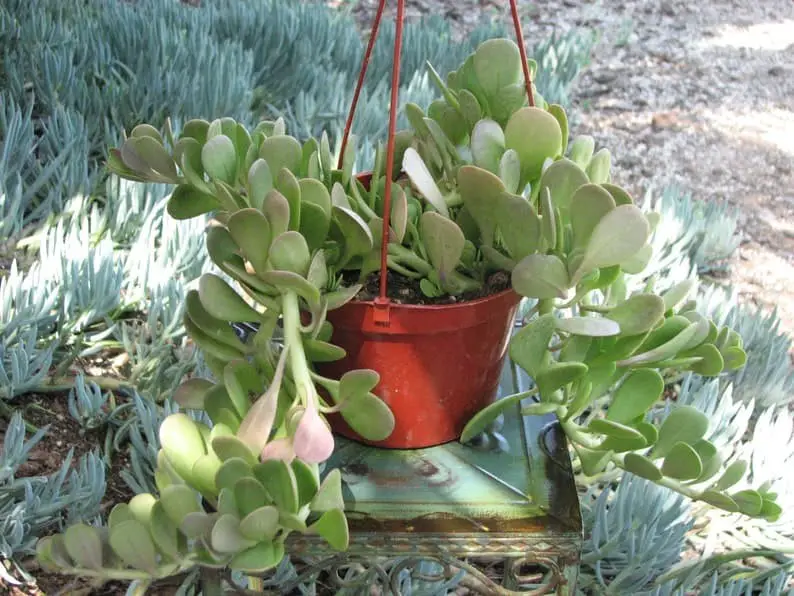
Etsy shoppers, rejoice! Native to South Africa, the Trailing Jade succulent is a stunning addition to any succulent collection. Its slender stems are adorned with blue-green leaves that boast a waxy coating for maximum moisture retention. This low-maintenance plant thrives in arid conditions, but still appreciates regular watering during its active growing season. With proper pruning, it can be kept bushy and compact; neglect it, and it’ll quickly grow leggy and sprawling.
If you’re new to succulent cultivation or a seasoned pro looking for an easy-to-care-for addition, the Trailing Jade is an excellent choice.
Variegated Trailing Jade (Crassula Sarmentosa ‘Comet’).
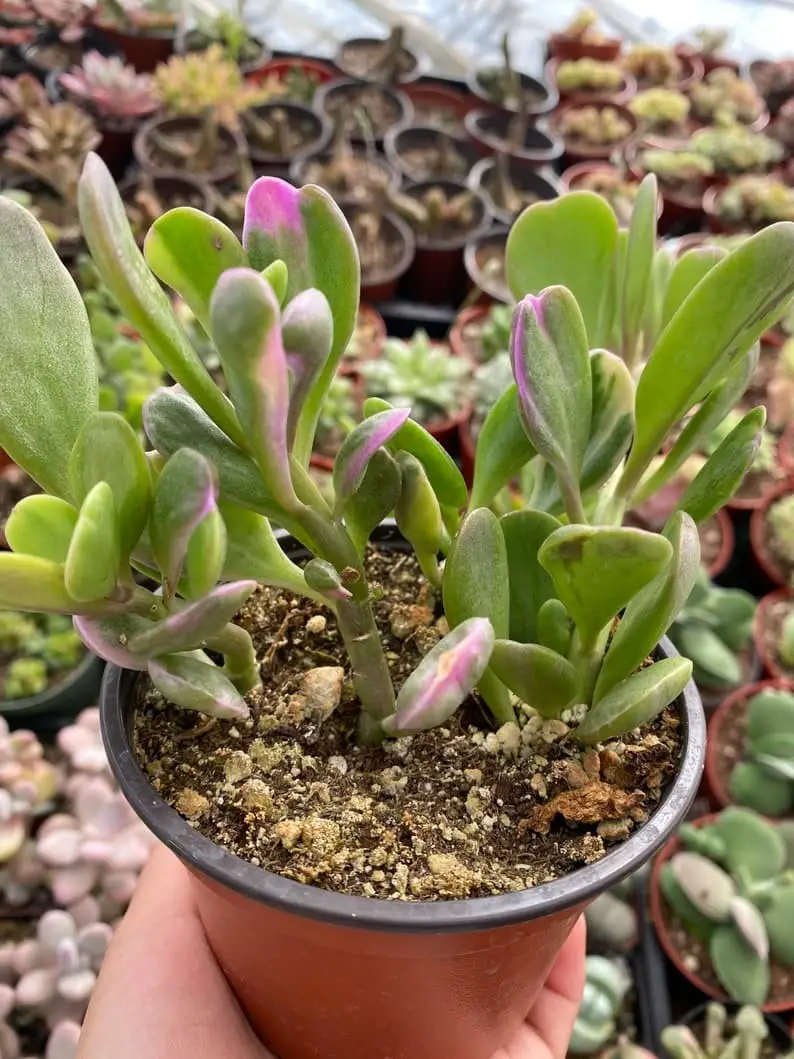
Get ready to shop on Etsy for this stunning comet plant, native to South Africa. To thrive, it requires bright, indirect light – it can tolerate some direct sun, but be mindful not to leave it out for too long, as scorching can occur. When it’s time to water, make sure the soil is dry to the touch before giving it a drink. Crucially, allow the plant to fully dry out between waterings to prevent root rot from setting in.
The comet boasts breathtakingly beautiful, variegated leaves with green hues and striking white streaks, featuring an ovate shape with subtle succulent texture. As the plant can grow up to 12 inches long, it’s a perfect fit for hanging baskets or adding a trailing touch to mixed succulent arrangements.
Wax Plant (Hoya Carnosa).
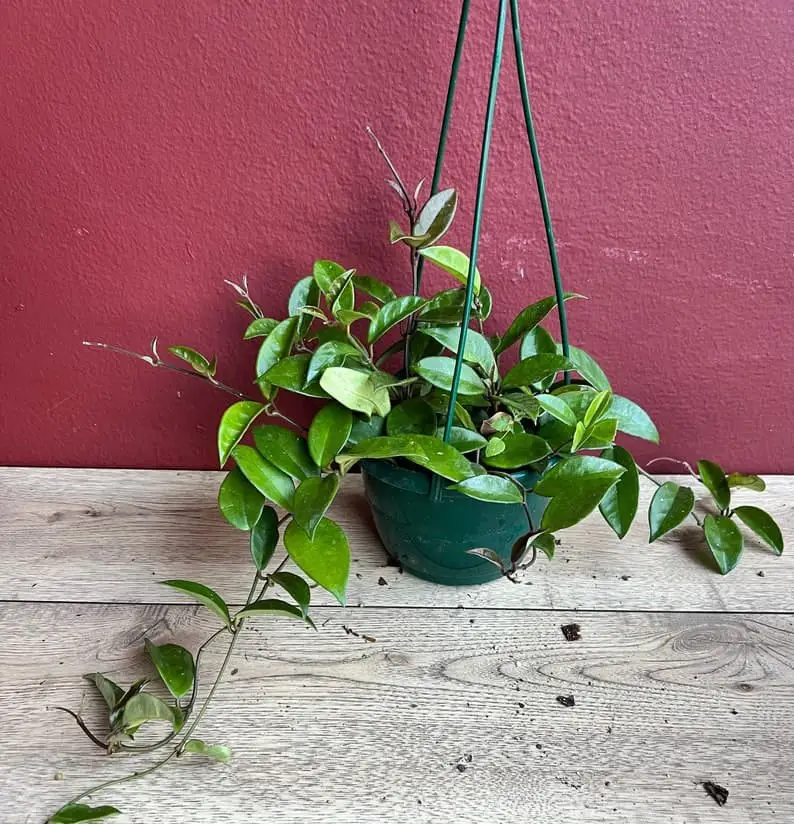
Discover the charm of Wax Plant, a low-maintenance yet stunning houseplant. Its waxy, fleshy leaves are a hallmark feature, earning it its name. Native to Southeast Asia and India, this evergreen vine is part of the Apocynaceae family, which also includes oleander and milkweed. With the ability to grow up to 20 feet in length, Wax Plants thrive in humid tropical forests. When they do bloom, their small, fragrant flowers appear in clusters, showcasing a range of colors from white to pink to red.
Caring for trailing succulents.
Trailing succulents offer a clever way to bring some greenery into your home without sacrificing too much floor space. These low-maintenance plants can flourish in both bright and low-light conditions, making them an ideal choice for busy homeowners.
To keep your trailing succulent happy and healthy, water it only when the soil feels dry to the touch. If you notice the leaves starting to wilt, that’s a clear indication it’s time to give it a drink.
Remember to ensure the pot has proper drainage holes to prevent the roots from becoming waterlogged.
For optimal health, fertilize your succulent every few months using a fertilizer specifically designed for these plants or a general-purpose option diluted to half strength.
During the spring and summer seasons, you may be treated to small, pale-colored flowers. If you’re looking to encourage this display of color, make sure your succulent is receiving sufficient light.
If you notice the leaves of your trailing succulent turning yellow or brown, it’s likely a sign that it’s not getting enough light. Simply relocate it to a brighter spot and adjust its watering schedule accordingly.
Conclusion
As you explore the world of trailing and hanging succulents, you’re presented with an array of options that cater to your unique garden needs. With a little care and attention, these versatile plants can add a touch of elegance and whimsy to any outdoor space. Simply provide them with ample light and water, and watch as they flourish in their new environment. We hope this selection has inspired you to get creative and find the perfect addition for your own garden.
Related Posts
To cultivate a thriving collection of succulent species, one must first understand the fundamental needs of each plant. String of Pearls, Peperomia Graveolens ‘Ruby Glow’, Rhipsalis cereuscula (Coral Cactus), and Crassula muscosa ‘Watch Chain’ are all unique specimens that demand distinct care and attention. Whether you’re looking to revive struggling succulents or start anew with a fresh container of plants, it’s crucial to grasp the intricacies of each species.
By doing so, one can ensure a harmonious coexistence between the plant and its environment.

